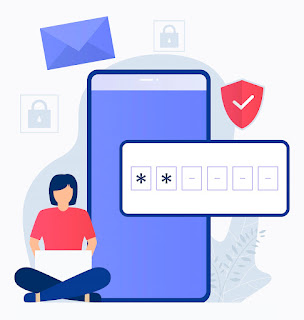One of my favorite phrases over the past few years is . . . You be you!
I have always believed that you need to do business your way and then find people who want to do business your way. If you follow this advice, you will always be "differentiated" because you are different from everyone else out there.
At the same time, there is much to be learned from various business models you are exposed to. This is one reason why peer groups and mastermind groups are so powerful. You mix up the DNA of your business with the DNA of other businesses.
Every once in a while, a business model comes along that is powerful enough to change your business completely. For many people, managed services is such a business model. I lay out a formula that I know to be successful in Managed Services in a Month. I also lay out a different but related model in Cloud Services in a Month. And many other people have presented their versions of managed services.
But there's a downside to this as well.Evolve of Die
I remember two great turning points in the SMB IT community. The first was the introduction of Active Directory in Windows 2000. Many consultants decided to dig into Windows Server 4.x because they simply refused to learn the new technology.
The other turning point was the recession of 2009-2011 (more or less). It wasn't the recession alone that caused the change: It was the Cloud. The maturity of the cloud was accelerated by the recession. Again, many people simply refused to learn new technology. With their businesses in distress, they decided to sell out, quit, retire, or go to work for someone else.
In both cases, many technicians simply refused to continue their own education. The next generation of Microsoft programs, the next level of security, and the next round of technology upgrades was just too much for them. Those who stuck to it and committed to the new stuff became very successful.
Your uniqueness will always be part of your company. You simply have to let it shine. But you also need to continue working on building and rebuilding your business.
Many of you know that I love The Emyth Revisited by Michael Gerber and recommend it a dozen times a month in various settings. But that's not my favorite Michael Gerber book. It's just the starting place. My favorite Michael Gerber book is Emyth Mastery.
Emyth Mastery picks up where Emyth Revisited leaves off.
I know you've heard it a million times: You have to work ON your business, not just IN your business. That's where the freedom is! But then you discover the dark side no one talks about from the stage: You become overwhelmed and exhausted by all the work required to work ON your business.
If you're not careful, working on your business is as overwhelmed and exhausting as working in your business. You still just have a job, but it's no longer the job of the technician; it's the job of the owner working on your business sixty hours a week!
Everything about your business must be sustainable in the long run.
That includes tweaking the business model, adopting new technologies, and evolving with the times. Here are a few tips that might help. (As always, easy to say but sometimes difficult to put into action.)
1) Define your business model. Sit in a chair and spend an hour writing out what you do and don't do. Who are your clients? What are your services? Why are you doing things this way?
2) Define you uniqueness. This is very hard work for many people. But you are unique. You have to be. You can't be the same as anyone else. What is your uniqueness and where does it show up in your business?
3) Don't let vendors tell you how to change your business model. Microsoft and Google are probably the most common examples here. Neither of them particularly cares whether your business lives or dies, but they are happy to help you learn how to sell their products.
4) Always know the next technology you will be adopting. This might be a cloud service, a business service, hardware, software, or something that's just emerging in our field. You don't have to adopt it right away, but know what it is.
5) Commit to never-ending education. You need education on the business side of things as well as the emerging technologies. When something new appears, jump in! You can't stay where you are, so pick a path and start walking.
6) Be consciously aware of your uniqueness in the industry as well as your local market. If you think you are the same as everyone else, then you believe yourself to be a commodity. No one can turn you into a commodity except you.
Yes, you still have to spend time working on your business. But it should be a passion project. It should be fun and invigorating. When it becomes too much, too hard, and just a hassle every day, then quitting slowly becomes a legitimate option. Don't let that happen to you.
The big reason to work on your business, and your life, is so that you stay in charge. Nothing should happen to you. You should choose the path you will walk - and make that path your own.
Embrace your uniqueness!!!
Comments welcome.
:-)
















